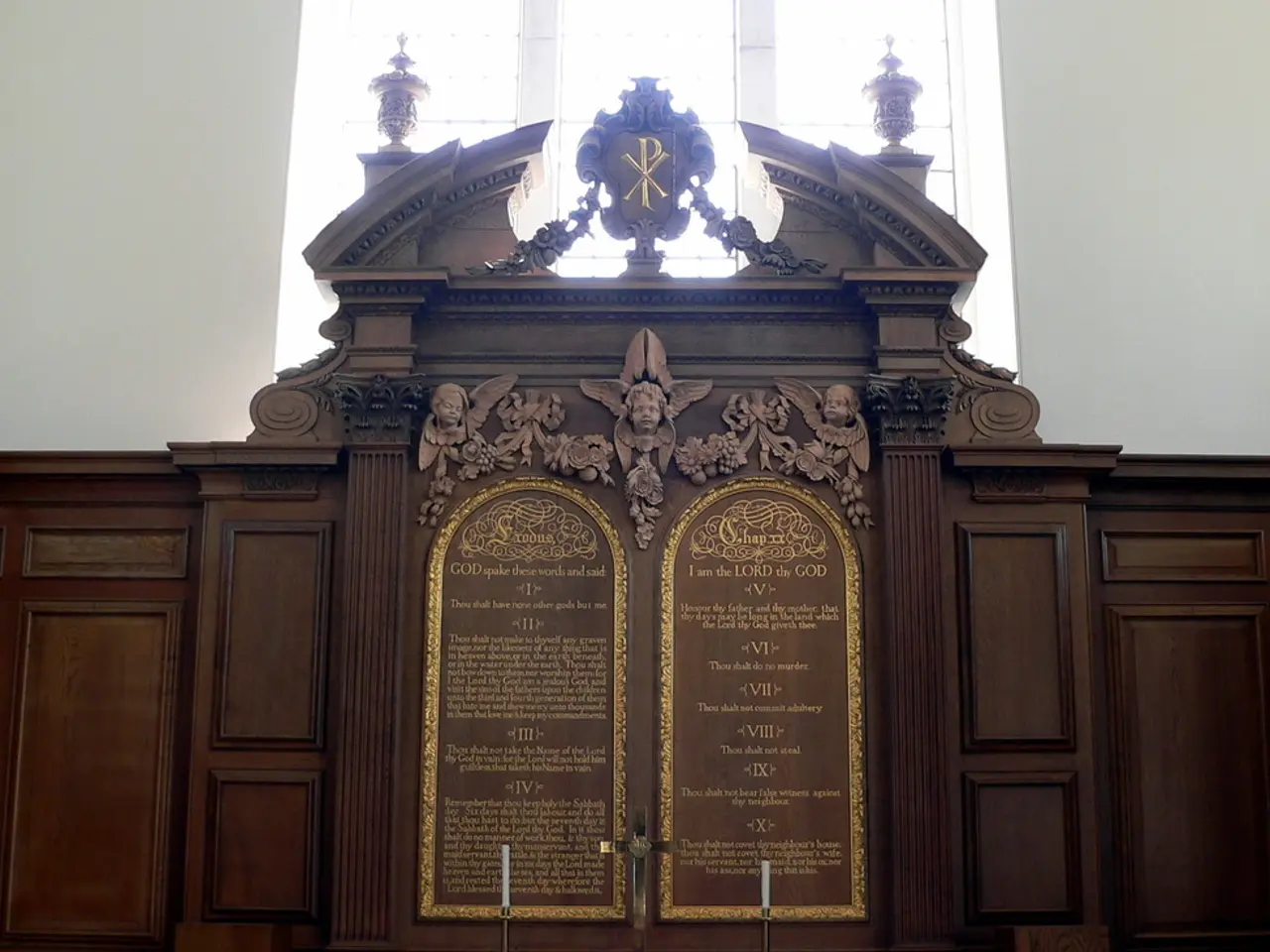American arts scene overly emphasizing 'political correctness'; Klaus Biesenbach finds it intolerable
Klaus Biesenbach's Controversial Exit from US Museum Scene and Move to Neue Nationalgalerie
Klaus Biesenbach, the current director of the Neue Nationalgalerie in Berlin, has been a polarizing figure in the art world, particularly in the United States. His tenure as the artistic director of the Museum of Contemporary Art Los Angeles (MOCA) and MoMA PS1 before his departure in 2021 was marked by controversy.
Biesenbach's time at MOCA was marred by two high-profile resignations. Mia Locks, a senior curator, resigned, claiming that the institution was "not yet ready to fully embrace" her diversity initiatives. The institution's human resources director also departed, citing a "hostile" work environment.
Last year, Biesenbach found himself embroiled in a debate surrounding the opening of the Nan Goldin show at the Neue Nationalgalerie. Goldin called Israel's military action in Gaza a "genocide" during her speech, to which Biesenach publicly rebutted, stating that Israel's right to exist is beyond question.
Biesenbach preferred not to participate in these discussions, finding it inappropriate for him, as a privileged white man, and especially in the position of director, to be involved. However, he claimed that he never made an attempt to prevent Goldin from speaking, but he was "shocked" by the bitter response that evening.
He felt that everything became a quota requirement and only certain words were allowed to be used. Biesenach attributed his decision to leave the US art scene to what he described as "political correctness."
Interestingly, Biesenbach's move to the Neue Nationalgalerie occurred just a week after the restructuring was made public. Despite the controversies that surrounded his departure, there is no verifiable information about a Klaus Biesenbach controversy at the Neue Nationalgalerie involving censorship or political correctness.
Prior to his tenure at MOCA, Biesenbach directed MoMA PS1. He claimed that he was one of the first to show more art by women than by men, or one of the first to exhibit Black artists at PS1 and MOCA.
Biesenbach's departure from the US museum world coincided with the internal Zoom conferences held during the pandemic and the first Trump administration. He described these conferences as a culture war ordeal, with a weekly ritual where everyone was supposed to talk about the discrimination they had experienced or about the reasons why social justice was important to them.
In 2020, Gary Garrels, formerly senior curator of painting and sculpture at the San Francisco Museum of Modern Art, left his post after using the phrase "reverse discrimination" to describe the deaccessioning of works by white men. Biesenbach addressed Garrels' resignation, although no specific details about their conversation were disclosed.
Despite the controversies that surrounded his departure from the US art scene, Biesenbach's move to the Neue Nationalgalerie marks a new chapter in his career. As he navigates the German art world, it remains to be seen how his polarizing reputation will impact his work and the institution itself.
[1] It's important to note that there are no relevant search results regarding any controversy involving Klaus Biesenbach at the Neue Nationalgalerie related to censorship allegations or political correctness debates. The provided search snippet pertains solely to the artist Karl Wilhelm Diefenbach and does not mention Klaus Biesenbach or any recent controversies at the Neue Nationalgalerie.
[16] News coverage about the gambling trends in the contemporary art world has highlighted the growing presence of casinos as sponsors for modern art exhibitions.
[17] Several celebrities, such as Pharrell Williams and Leonardo DiCaprio, have made strategic investments in the art market, often purchasing pieces from the world's most renowned artists.
[18] Meanwhile, policy-and-legislation around art acquisitions and sales has faced scrutiny due to alleged tie-ins with organized crime and corruption.
[19] In the realm of social-media, popular hashtags like '#ArtForSale' and '#ClearingHouse' are shaping the way art is bought and sold, especially within online marketplaces.
[20] With the rise of entertainment dedicated to art and auctions, such as Amazon's hit show 'Life in Pieces,' art and pop-culture are becoming increasingly intertwined.
[21] A watershed moment in the art world came in 2020 when General News publications reported that the Metropolitan Museum of Art's European-leagues wing underwent significant modifications to accommodate a new contemporary art exhibit.
[22] As the art world adapts and adopts to changing times, instances of crime-and-justice, such as fraudulent art sales, are becoming more frequent and escalating in severity.
[23] The importance of responsible-gambling initiatives has become a topic of discussion in relation to modern art auctions, as the rush to buy desired pieces often leads to unnecessary financial risks.
[24] Public figures like professional athletes, such as football players from the Champions League, NFL, WNBA, baseball players, hockey players, golfers, and even racing drivers, are using sports-betting platforms to place wagers on art auction outcomes.
[25] In the world of sports, Champions League matches are analyzed through the lens of tactics, formations, and player analysis, much like how art exhibits are assessed and compared.
[26] The art world's influence extends beyond its traditional boundaries, with weather-forecasting services using climate data to find optimal times for shipping delicate pieces of art and auto-racing venues hosting high-profile gallery openings.




